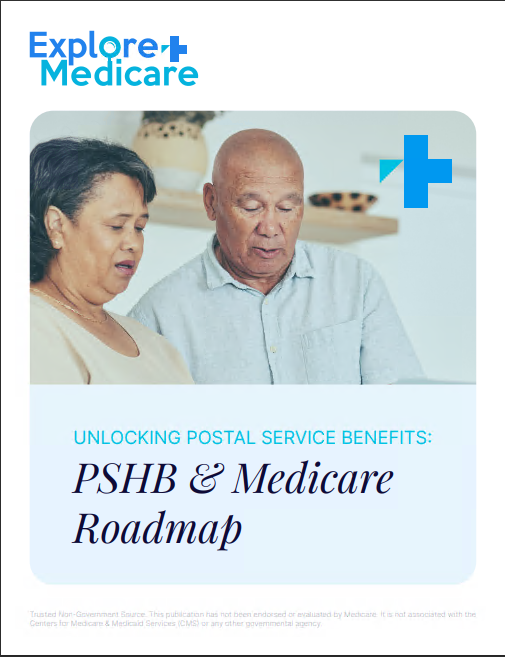Key Takeaways
-
While Medicare Advantage plans may appear less expensive upfront in 2025, the long-term out-of-pocket costs can be unpredictable and significantly higher than expected.
-
Understanding the trade-offs between lower premiums and potential limits on care, networks, and costs is critical before choosing a plan.
What Makes Medicare Advantage Seem Cheaper in 2025
In 2025, many Medicare Advantage plans promote lower upfront costs, including reduced premiums and copayments. On the surface, this makes them attractive—especially if you’re comparing them to Original Medicare combined with a standalone Part D plan and optional Medigap policy.
Here’s why these plans might seem more affordable at first glance:
-
Bundled benefits that include drug coverage, vision, dental, and hearing
-
Lower monthly premiums compared to Medigap
-
Caps on annual out-of-pocket costs, which Original Medicare doesn’t offer
-
Extra perks like gym memberships or wellness programs
However, lower monthly costs don’t always mean lower overall costs. The structure of Medicare Advantage plans means you could end up paying more in the long run, depending on your health needs and the care you require.
The Real Cost of Care When You Need It Most
One of the biggest misconceptions about Medicare Advantage is that you’re protected from high costs simply because of the out-of-pocket maximum. In reality, that cap can still be thousands of dollars—up to the 2025 Medicare Advantage maximum limit of $9,350 for in-network services and $14,000 when combining in- and out-of-network care.
Here’s what can drive up your costs:
-
Frequent specialist visits with separate copays
-
Hospital stays that require daily copayments for each day of admission
-
Expensive outpatient procedures like chemotherapy or dialysis
-
Unexpected out-of-network charges if your provider leaves the plan’s network midyear
These costs can accumulate quickly, particularly if you experience a sudden illness or manage chronic conditions. With Original Medicare and Medigap, your out-of-pocket responsibilities are typically more predictable.
Narrow Networks Limit Your Choices
In 2025, many Medicare Advantage plans continue to operate with restricted networks. This means you’re required to use a list of approved doctors, hospitals, and specialists to receive full coverage.
That sounds manageable—until you need care:
-
You may not be able to see your preferred doctor unless they’re in-network.
-
Specialist availability can be limited, especially in rural or underserved areas.
-
Traveling outside your plan’s service area could leave you without access to covered care.
-
Network changes midyear can leave you scrambling to find new providers.
This contrasts with Original Medicare, which allows you to see any provider who accepts Medicare nationwide, without needing referrals or approvals.
Prior Authorization Delays and Denials
Prior authorization is still a significant concern with Medicare Advantage plans in 2025. Even for essential services, you may need to get permission from your plan before receiving care. That creates delays—and in some cases—denials.
You could face authorization requirements for:
-
Inpatient hospital admissions
-
Advanced imaging (MRI, CT scans)
-
Home health services
-
Rehabilitation or skilled nursing care
The process can be time-consuming, and a denial can mean paying the full cost out-of-pocket or delaying treatment. Original Medicare rarely requires prior authorizations, making access to care more straightforward.
Drug Costs May Not Be as Low as You Expect
While some Medicare Advantage plans include prescription drug coverage, the savings are not always guaranteed. In 2025, Medicare Part D has a $2,000 annual out-of-pocket cap on prescription costs, which helps all Medicare beneficiaries—but not every Medicare Advantage plan integrates this feature smoothly.
Things to consider:
-
Formularies may be restrictive, covering fewer medications than standalone Part D plans.
-
Tiered pricing can result in high copays for brand-name or specialty drugs.
-
Step therapy may require you to try less expensive alternatives before accessing what your doctor originally prescribed.
Your ability to manage ongoing medication costs could depend heavily on your plan’s drug list and rules.
Emergency and Out-of-Area Coverage Is Limited
In the case of emergencies, all Medicare Advantage plans are required to cover urgent care—even if you’re out of your service area. But once that emergency is stabilized, continuing care can be complicated.
Here’s what to expect:
-
Follow-up visits might not be covered unless they happen within your network.
-
Routine care while traveling is usually not covered at all.
-
Out-of-network billing may still apply in certain situations, increasing your total costs.
With Original Medicare, access to care is much broader, especially if you’re a frequent traveler or spend parts of the year in different states.
Supplemental Benefits: Nice, But Not a Replacement for Core Coverage
Medicare Advantage plans are well-known for offering extra benefits that Original Medicare doesn’t, such as:
-
Dental cleanings and exams
-
Vision exams and eyewear
-
Hearing aids
-
Meal delivery or transportation to medical visits
While these perks are valuable, they should not distract you from the plan’s core limitations. Many of these extras come with usage caps or limited provider networks and should not be the deciding factor in your plan selection.
Cost Predictability in Original Medicare + Medigap
One of the biggest reasons people switch from Medicare Advantage to Original Medicare with a Medigap policy is the stability of costs. Even though Medigap policies come with monthly premiums, they often provide:
-
Predictable out-of-pocket costs, even during high-need years
-
Freedom to choose any provider nationwide
-
No prior authorization requirements
-
Better financial protection for serious illness or long-term treatment
In contrast, Medicare Advantage plans may surprise you with costs that weren’t apparent during enrollment.
Enrollment Decisions Are Time-Sensitive
In 2025, you have specific periods to make or change your Medicare Advantage selection:
-
Open Enrollment: October 15 to December 7, 2025, for changes effective January 1
-
Medicare Advantage Open Enrollment Period: January 1 to March 31, 2025, allowing a one-time switch to a different Advantage plan or back to Original Medicare
Once these periods close, you’re generally locked into your plan for the rest of the year unless you qualify for a Special Enrollment Period. Choosing a plan with incomplete information or unrealistic expectations could result in higher costs or less access to care until the next enrollment window.
Get the Full Picture Before Enrolling
While Medicare Advantage plans in 2025 offer appealing features at first glance, their limitations can result in higher long-term costs, care restrictions, and less control over your healthcare.
Before enrolling, make sure to:
-
Review your current health needs and prescription drug use
-
Understand the plan’s provider network and referral requirements
-
Consider how often you travel or live in more than one location
-
Estimate the worst-case out-of-pocket costs based on the plan’s structure
Being thorough now can help you avoid surprise expenses and limited options later.
Weigh Your Priorities Carefully Before Choosing a Plan
Medicare Advantage plans often attract attention because of the initial savings and extras. But when you look deeper, you might find trade-offs that don’t align with your long-term health or financial goals.
If your priority is predictable costs, access to any doctor who accepts Medicare, and fewer delays in care, Original Medicare with Medigap may provide stronger protection in the long run.
Get in touch with a licensed agent listed on this website if you need professional guidance to make the best decision for your health and budget.









